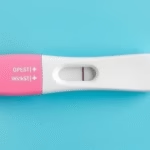Understanding Implantation Bleeding with Clots
Implantation bleeding refers to light spotting that occurs when a fertilized egg attaches itself to the lining of the uterus, typically around 6 to 12 days after conception. Unlike a regular menstrual cycle, which involves heavier flow and more prominent symptoms, implantation bleeding is often lighter, sometimes described as barely noticeable. When discussing implantation bleeding, it is essential to note that some individuals may experience the presence of small clots. This phenomenon can raise questions and concerns about its normalcy and significance.
Clots during implantation bleeding can occur due to the nature of the processes happening in the uterus. When the embryo implants, it can sometimes cause slight disruptions in the blood vessels, resulting in small clots that may be mixed with the spotting. In most cases, this is typically regarded as a normal occurrence; however, observing clots that are larger or coupled with severe pain might indicate a need for medical consultation. Understanding the nuances of implantation bleeding and the presence of clots can help individuals interpret their symptoms accurately.
Clots and the Process of Implantation
The implantation process involves complex hormonal changes and physiological adjustments in the body. When a sperm fertilizes an egg, the developing embryo moves through the fallopian tube toward the uterus. Once it reaches the uterine cavity, the embryo needs to implant into the uterine lining to receive nutrients and support for growth. During this implantation, tiny blood vessels can be disrupted, causing light bleeding and potential clotting.
These clots often appear as small flecks or strings, which can be alarming but are frequently normal. The presence of clots during this phase should not be instantly associated with negative health outcomes, as many people experience light clotting without complications.
However, it is important to differentiate between typical small clots associated with implantation and those that might signify other reproductive health issues. Should a person experience unusually heavy bleeding accompanied by large clots and abdominal pain, medical advice is advised as it may signal an early miscarriage or another concern.
It is essential to monitor the color and consistency of the bleeding. Implantation bleeding is typically light pink or brown, whereas more concerning bleeding in early pregnancy is usually bright red and heavier.
When Does Implantation Bleeding Occur?
Implantation bleeding generally occurs around 6 to 12 days post-ovulation. This could vary based on individual cycles and physiological differences. For those trying to conceive, tracking ovulation can help estimate when implantation bleeding might occur. This period correlates with the time between ovulation and the expected menstrual cycle. Detecting the signs early can provide insight into a potential pregnancy.
Interestingly, many people may confuse early signs of implantation bleeding with an impending menstrual cycle. This can result in anxiety or stress, particularly when monitoring for pregnancy symptoms. Recognizing the timing of implantation bleeding can facilitate better emotional regulation and transition into the possibility of pregnancy.
Consider using a calendar or fertility app to keep track of ovulation and menstrual cycles consistently. This information can prove helpful not merely for those tracking their periods but also for those aspiring to conceive.
Distinguishing Between Implantation Bleeding and Menstrual Bleeding
Understanding the nuances between implantation bleeding and menstrual bleeding is crucial for anyone assessing early pregnancy signs. While both may present with similar symptoms, there are key differences to observe. Implantation bleeding tends to be considerably lighter and shorter in duration than a regular menstrual cycle, usually lasting only a few hours to a couple of days.
Additionally, the color of the blood can vary; implantation bleeding is often light pink or brown, whereas menstrual bleeding usually presents as bright red. The consistency may also differ, where menstrual blood could be thicker and more substantial than the light spotting often associated with implantation.
Identifying these distinctions can significantly influence the approach individuals take to their reproductive health and well-being. Those seeking clarity about their symptoms should consider maintaining a diary of their cycles, helping track variations in bleeding.
If confusion persists, consulting a healthcare professional could provide clarity and peace of mind. Early professional advice can be critical for identifying healthy pregnancy signals versus other health issues.
Common Symptoms Accompanying Implantation Bleeding
Implantation bleeding may bring several accompanying symptoms that could indicate early pregnancy. Symptoms like mild cramping, breast tenderness, and fatigue may occur alongside the spotting.
It is vital to recognize that these symptoms can vary widely among individuals. While some experience several signs, others may have very few. It is the combination of these symptoms and the timing that can help indicate potential pregnancy more accurately rather than relying solely on any single symptom.
Keeping a journal of these symptoms can help individuals understand their bodies better. Notes on the onset, severity, and duration of symptoms can assist in discerning patterns linked to possible menstruation or pregnancy.
Consulting a Healthcare Professional
In light of any bleeding and particularly the presence of clots, seeking medical advice may be appropriate. This consultation is essential when heavy flow accompanies clotting, especially if dissatisfaction occurs, as they may indicate complications like miscarriage or ectopic pregnancy.
A healthcare professional can provide clarity on the situation, recommend necessary testing, or advise further investigation if required. It is vital not to overlook symptoms that cause discomfort or confusion.
Regular check-ups and open communication with a healthcare provider create a proactive approach to understanding one’s reproductive health and can contribute to timely interventions if necessary.
Final Thoughts
The topic of implantation bleeding, especially regarding the presence of clots, is vital for understanding early pregnancy signs. While some individuals may find comfort in knowing that clotting can occur during this process, maintaining awareness of all accompanying symptoms and their context is crucial. Monitoring patterns in menstrual cycles and being informed about potential pregnancy symptoms can empower individuals in navigating their reproductive health journeys effectively.
If you experience any significant discomfort, heavy bleeding, or large clots, it is prudent to seek medical attention. The nuances of reproductive health necessitate awareness and proactive engagement with healthcare professionals to ensure a smooth transition during this critical period. Understanding the body’s signals and responding appropriately contributes to overall well-being and peace of mind as you navigate potential pregnancy.
Frequently Asked Questions
- Is implantation bleeding normal?
Yes, implantation bleeding is typically normal and occurs as the embryo attaches to the uterine lining.
- How long does implantation bleeding last?
Implantation bleeding usually lasts from a few hours to a couple of days.
- What should I do if I see clots with implantation bleeding?
If the clots are small and accompanied by light flow, it may be normal; however, seek medical advice if the bleeding is heavy or painful.
- When should I take a pregnancy test after implantation bleeding?
It’s advisable to wait at least a few days after the bleeding to take a pregnancy test, as hormone levels may not yet be detectable.
- Can implantation bleeding occur during a missed period?
Yes, implantation bleeding may occur close to or on the expected date of the menstrual cycle, which can lead to confusion.
Further Reading
What Type of Psychotherapy Is Best for Anxiety?







